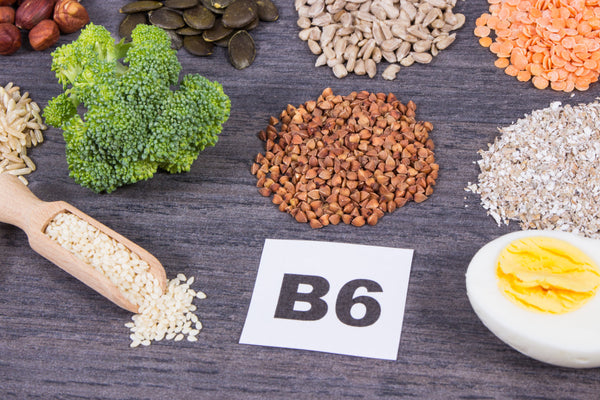
Characteristics of Pregnant Women Lacking Folic Acid

Folic acid is a nutrient that is recommended to be consumed not only during pregnancy but also preconception when a woman is of childbearing age.
Folic acid, a synthetic form of the B vitamin "Folate," which is naturally present, protects newborns against neural tube defects and is crucial for the creation of red blood cells.
Read: 3 Benefits of Taking Pregnancy Vitamins, Don't Miss It!
Benefits of Folic Acid During Pregnancy
Folic Acid supplementation during pregnancy is very important. This is because the Neural Tube is formed in the first few weeks of pregnancy, often even before the pregnant woman finds out that she is pregnant.
This makes adequate Folic Acid supplementation during pre-conception essential. Some of the benefits of Folic Acid during pregnancy are –
- Spina bifida and anencephaly are examples of neural tube defects that folic acid can help avoid.
- Folic Acid can protect babies from Cleft Lip and Palate
- Folate can prevent Low Birth Weight in infants, Miscarriages, and Poor Growth in the womb.
- Folic acid during pregnancy can reduce the risk of pregnancy complications, heart disease, stroke, some types of cancer, and Alzheimer's disease.
The proven benefits of Folic Acid & make this nutrient mandatory to consume it during pregnancy to prevent diseases &complications.
Folic Acid Sources
The following foods can provide you with a sufficient amount of Folic Acid –
- Cereal
- nuts
- Spinach
- Egg Noodles
- Asparagus
- Grains and Nuts
Since pregnant women may not be able to obtain sufficient amounts of Folic Acid from food, it is better that women take Folic Acid Supplements.
Characteristics of Pregnant Women Lacking Folic Acid
Folic acid is an important vitamin for the formation, growth, and function of red blood cells. During pregnancy, you need more folic acid for the growth of your baby and placenta. Folic acid plays a key role in the formation of your baby's nervous system.
The risk of pregnant women lacking folic acid is birth defects such as:
- Spina bifida (spinal abnormality)
- Anencephaly (born without parts of the brain and skull)
- Fetal growth is severely impaired
It can also increase your risk of:
- Folate deficiency anemia
- Premature birth
- Preeclampsia
- Miscarriage
Some of the signs of Pregnant Women Lacking Folic Acid include:
- mouth and tongue soreness and ulcers
- Changes in pigmentation of hair, skin, or nails
- Weakness and fatigue
- Difficulty concentrating
- Irritability
- Headache
The American College of Obstetricians and Gynecologists recommends that you take 600 micrograms of folic acid daily.
Make sure you take the prenatal multivitamin recommended by your doctor and not just any multivitamin, as the amount of folic acid can vary greatly in a multivitamin supplement.
Heat can destroy folic acid. Steam or sauté your vegetables, and eat raw fruits and vegetables if possible.
How to Prevent Folate Deficiency: Daily Intake Recommendations
Folate is mostly present in plant foods, so the best way to get enough folate and prevent folate deficiency is to eat five or more servings of whole foods such as fruits and vegetables daily.
To get enough folic acid, drink a prenatal multivitamin daily and include eating foods high in folic acid:
- Grains (rice, bread, pasta, cereals)
- Green vegetables (spinach, asparagus, brussels sprouts, peas, broccoli)
- Fruits (avocado, orange, strawberry, melon, papaya)
- Beans and lentils
- Nuts and seeds
- Poultry and meat
- Beef liver (consumption no more than once a week)
- Whole grains
- Egg
Folate is also naturally present in some animal products, including liver and poultry.
In general, it should be quite easy to prevent folate deficiency by eating a balanced diet. But studies have shown that folate absorption varies significantly from person to person. There are several factors that influence how much folate a person can absorb from the food they eat, including zinc levels and the health of their kidneys, liver, and intestines.
The total content of folate in the body may be from 10 to 30 milligrams, about half of which is stored in the liver. The rest is present in the blood and tissues of the body. To test for folate deficiency, the doctor may perform a serum folate concentration test (values above 3 nanograms (ng)/mL indicate deficiency).
However, a better approach is to test the concentration of erythrocyte folate, which provides a measure of long-term folate intake and is a better indicator of folate stored in tissues.
According to the National Institute of Health, the dietary allowances (LBAs) that folate recommends are as follows:
- Infants and infants: 65 micrograms/day
- Children ages 1–8: 80–150 micrograms/day
- Adolescents ages 8–13: 300 micrograms/day
- Adult men and women (over the age of 14): 400 micrograms/day
- Pregnant women: 600 micrograms/day (about 50 percent higher than the recommendation of non-pregnant women)
- Women who are breastfeeding: 500 micrograms/day
Folate vs Folic Acid: An Important Difference!
At least 35 percent of adults and 28 percent of children in the United States use supplements containing folic acid.
Folate and folic acid usually function interchangeably, but they definitely have some important differences. While folate is a natural and essential vitamin, folic acid is a synthetic B vitamin found in supplements and fortified foods.
Folate is easily and naturally absorbed by the body when it is metabolized in the small intestine. On the other hand, folic acid — which was first introduced around the 1940s — requires the presence of a specific enzyme called dihydrofolate reductase, which is relatively rare in the body.
What harms supplementation with folic acid? Since many of us, especially women of "childbearing age", are not able to metabolize folic acid well, an increase in levels of folic acid that is not metabolized enters and remains in the bloodstream.
Side effects of folic acid remaining in the body include changes in sex hormones, difficulty concentrating, inability to sleep, mood swings, and deficiencies in certain nutrients such as vitamin B12.
High levels of folic acid in the blood are even associated with the development of cancer, according to some studies.
Some studies have found a link between supplementation with high levels of folic acid or obtaining it from fortified foods (such as cereal grains, bread, etc.) promoting the growth of pre-cancer cells and tumors.
This is unfortunate given that folic acid remains on the FDA's mandatory food fortification list that was first developed in 1998. According to the U.S. Department of Health and Human Services, in 1998 the FDA began requiring food manufacturers to add folic acid to fortified grain products – including all bread, cereals, flour, cornstarch, pasta, rice, and other packaged goods.
Other countries, including Canada, Costa Rica, Chile, and South Africa, have also established mandatory folic acid fortification programs. The FDA's fortification program is projected to increase folic acid intake in the average American diet by about 100 micrograms/day, but the program actually increases folic acid intake on average by nearly double this amount — about 190 micrograms/day.
The USDA claims that there is a higher level of folic acid bioavailability than folate found in food.
At least 85 percent of folic acid is estimated to be bioavailable when consumed with food, whereas only about 50 percent of folate is present naturally in bioavailable foods. There are pros and cons to this since it means that folic acid can easily remain elevated, but it can also help prevent certain symptoms of deficiency.






